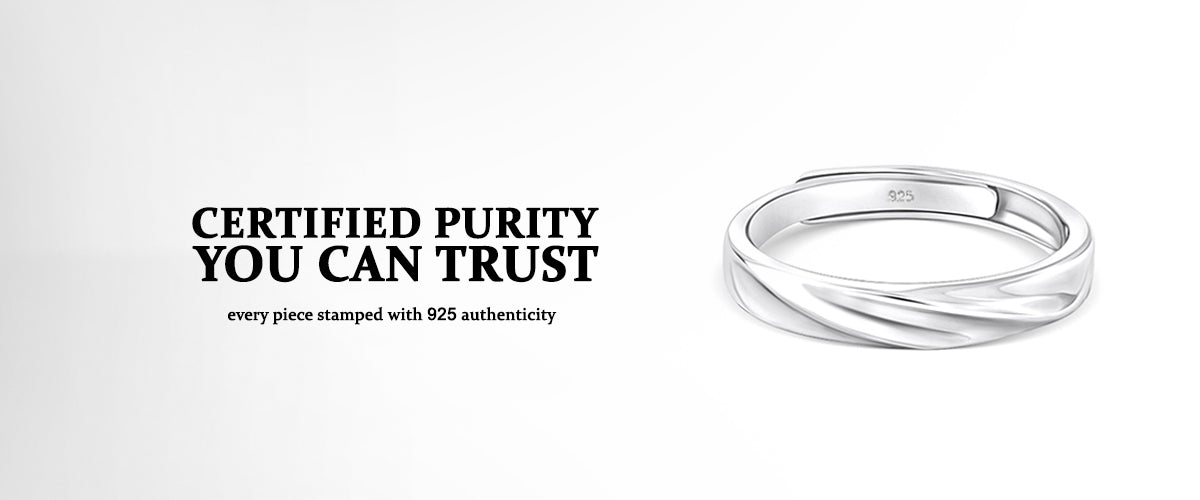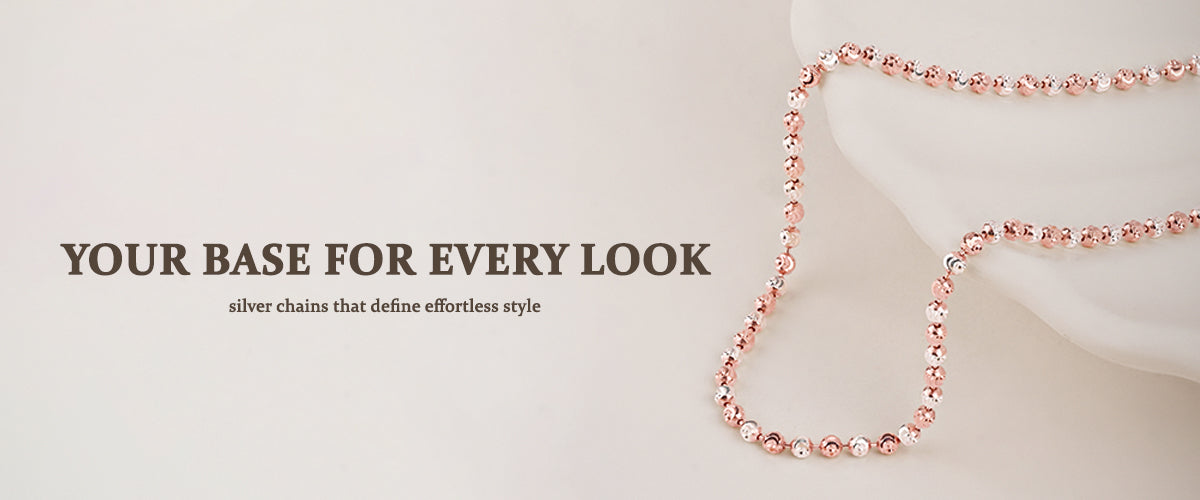How to Identify 925 Sterling Silver

It's a fantastic idea to get jewellery made of sterling silver. People love this metal because it shines well, lasts a long time, and has a traditional look. It's more vital than ever to know how to make sure the item you're buying is authentic today, as there are more online markets and sellers. If you know how to tell the difference between 925 sterling silver and fake silver, you won't buy cheap knockoffs and will receive a true item. We will show you how to search for significant signals and understand the physical qualities of silver so that you may become a competent collector.
Look for the Hallmarks
-
The “925” mark is the most common and well-known mark for sterling silver in the world. This signifies that 92.5% of the piece is pure silver and 7.5% is made up of other metals, such as copper. This metal makes the silver sturdy and durable, so you can wear it every day. You can usually find this mark on jewellery, such as the inside of a ring band, the clasp of a necklace, or the post of an earring.
-
Some sterling silver objects, notably those from the US or UK, may have the words “STERLING” or the abbreviation “STER” stamped on them in addition to or instead of the “925” mark. These symbols also show that the item is made of 92.5% silver.
-
The ways of hallmarking are more intricate and use more stamps in different countries. The “lion passant” symbol is common on British sterling silver, and the “Minerva head” mark is often seen on French silver. These marks can tell you a lot about the piece's history and where it comes from.
-
You might see a brand name or a maker’s mark next to the purity mark. The stamp on this piece tells you who manufactured it, the silversmith or maker. Another evidence of the quality and provenance of the jewellery is that well-known brands like Touch925 always place their name on it.
Shop at Touch925 and learn how to identify 925 sterling silver with clear hallmarks, authenticity checks and trusted certification.
Conduct Simple At-Home Tests
-
Real sterling silver does not stick to magnets. This is because neither silver nor the copper it is combined with is magnetic. Put a powerful magnet next to the silver jewellery. If the magnet attaches to the jewellery, it's likely not true sterling silver. It's likely constructed of a basic metal like nickel or iron.
-
Silver is the best metal for conducting heat. That is to say, it circulates heat around really quickly. Putting a bit of ice on the flat surface of the metal item is all you need to do for this test. If it's real, that ice will melt very quickly, far faster than it would on glass or another metal. The silver will feel very chilly to the touch. This is a fun and easy way to find out how real the jewellery is.
-
The sulphur in the air will slowly turn real sterling silver black when you put it through the Polish Test. This rust looks like a black film. You can tell if this is the case by lightly rubbing the object with a white cloth or a silver cleaning cloth. If the cloth comes off with black stains on it, the metal is probably real. If there is no residue, it could be silver-plated or made of a different metal.
-
Sterling silver has a definite weight to it. It feels weighty and sturdy for how small it is. A piece of jewellery that looks big but feels light or flimsy could be made of a less expensive metal that isn't as thick. This strategy isn't ideal on its own, but it can help you trust your gut, especially if you have a piece of silver to compare it to.
Signs of Fake Silver
-
If the silver is peeling or flaking, it probably isn't true silver. Jewellery that is silver-plated has a thin layer of silver on top of a base metal. Over time, plates like these might wear down, revealing a new colour of metal underneath, usually one that is yellowish or brassy. A genuine sterling silver piece will only tarnish; it won't flake or show a different metal.
-
As we said before, not having a “925” or “STERLING” mark is a significant warning sign. Be careful of items that merely say “silver” or “silver-plated” in the description. Also, be careful of hallmarks that are hazy, uneven, or applied in a strange way. These could be indicators of a fake that was stamped fast.
-
If an offer sounds too good to be true, it probably is. Silver is a precious metal that has a market value that changes over time but stays the same. It is highly likely that a big, sophisticated piece that is being sold for a very low price is not real. You can't sell real, solid silver for the lowest prices because it costs a lot to create and work with.
-
When sterling silver comes into contact with lotions or makeup that have chemicals in them, it can affect the colour of your skin. But this doesn't happen very often. A greenish layer on your skin suggests that the metal has a lot of copper in it. This is frequently true for cheaper models that aren't sterling. When sterling silver has copper in it, it can sometimes generate a tiny reaction. A definite green mark, on the other hand, is a strong clue that the piece is phoney.
Check out Touch925 Silver Jewellery for guidance on how to identify 925 sterling silver and shop only jewellery that is tested, marked and guaranteed pure.
Expert & Professional Testing
-
A tiny scratch is formed on the metal, and then nitric acid is swiftly applied. When the acid touches true sterling silver, it will turn a creamy white hue. Different metals will react differently. Fake silver and other metals will often become green, depending on what they are made of. This test has a lot of acid in it; thus, only an expert should do it.
-
This is the greatest approach to check anything without breaking it. An XRF machine uses X-rays to figure out what elements make up a metal without damaging it. It can tell you exactly how much silver, copper, or any other metal is in the mix. This is the most scientific and precise way to tell if something is true sterling silver.
-
If you're not sure about a piece of jewellery, you should take it to a jeweller who has been in business for a long time and is trustworthy. They can examine the piece, check for hallmarks, and, if needed, offer it a professional test. You might feel better knowing that they are there to help you make a wise choice.
-
A Certificate of Authenticity might come with the item if you buy it from a brand you trust. This paper is a written commitment that the metal is pure, which is a good sign that the product is legitimate. You can trust brands like Touch925 since they are sure their items are good.
Shop authentic 925 sterling silver at Touch925, where every piece is certified, crafted with care and designed to last.



